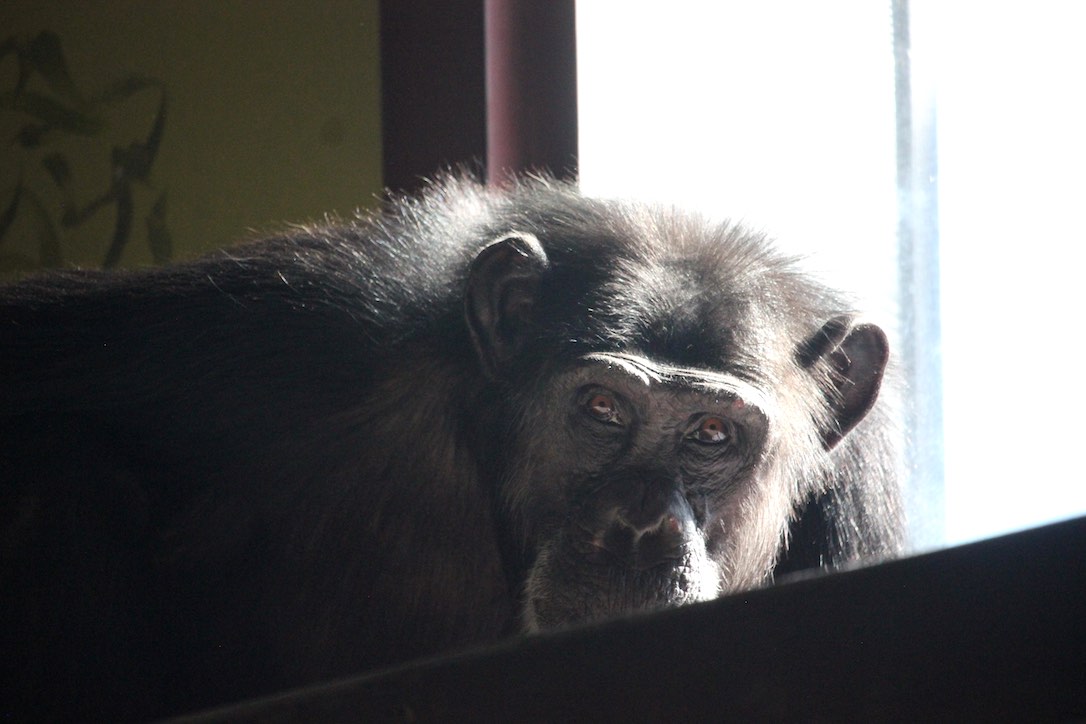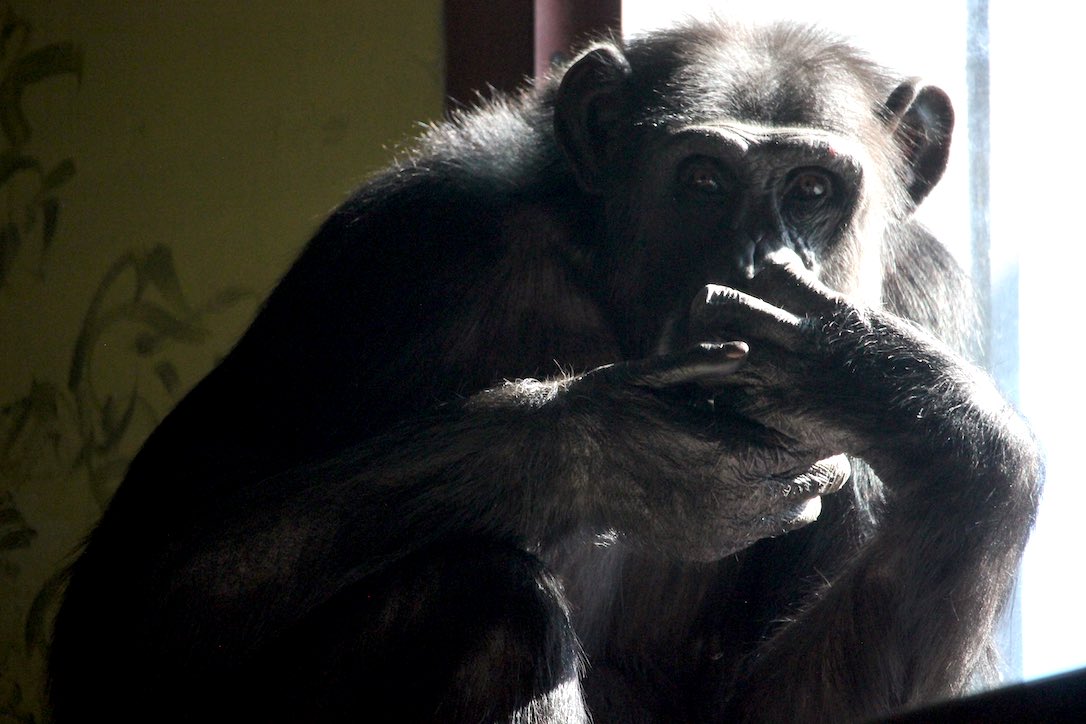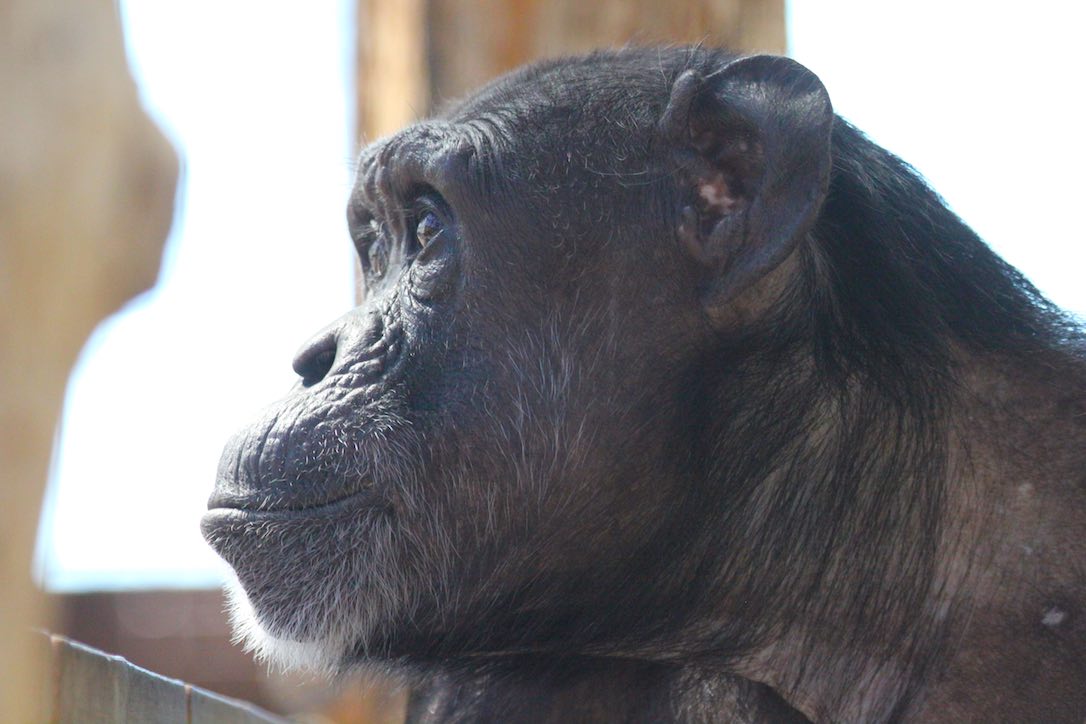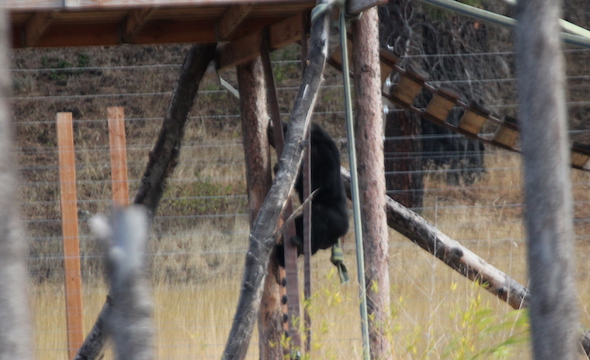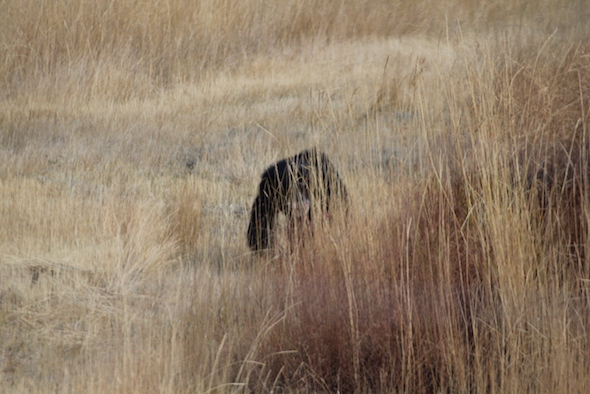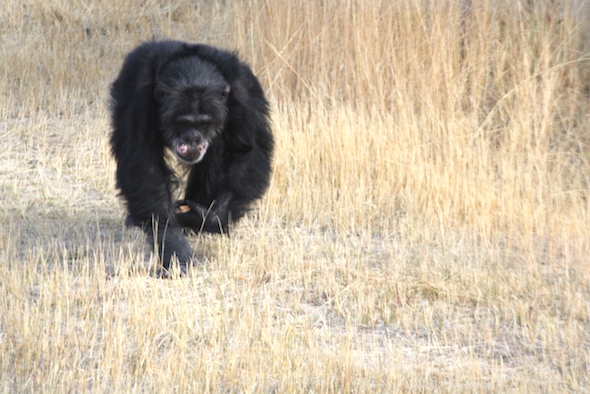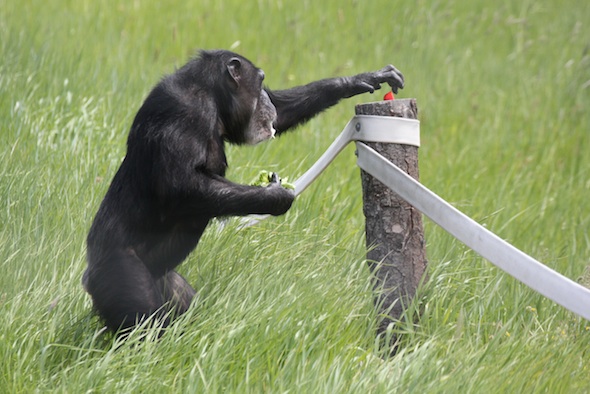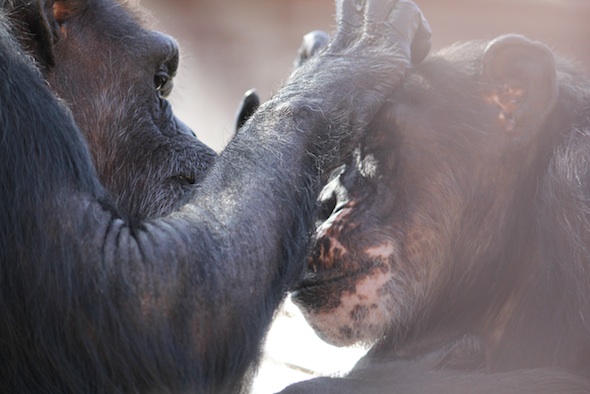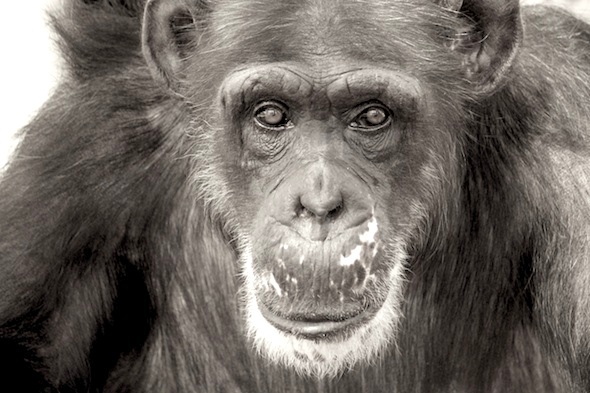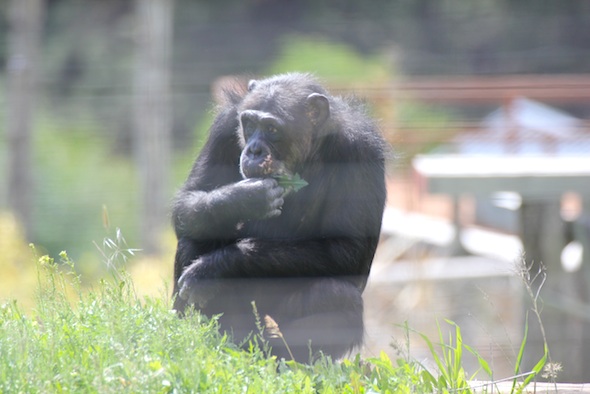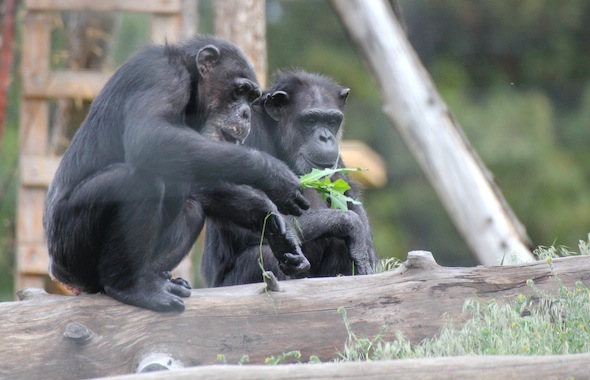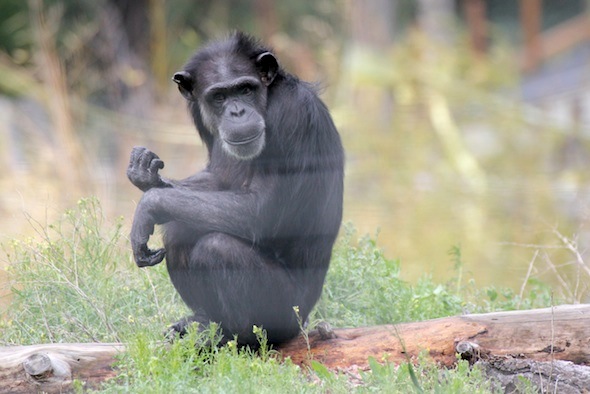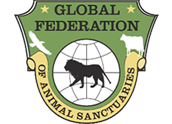There’s an image from the news last month that I can’t get out of my mind. I’m betting many of you saw it too. It was a photograph, shared in this New York Times article, among many other publications, of wooden crates strewn across a highway, some of them upright, some of them on their sides. There are stickers on the crates that say “Live Animals” and “Do Not Tip”.
We know from the reporting that these crates held cynomolgus macaques, often referred to as “cynos” by caretakers in biomedical laboratories, and commonly called both crab-eating and long-tailed macaques. We know that there were around 100 monkeys on the truck that crashed in Pennsylvania and that they were being transported from John F. Kennedy airport to an undisclosed biomedical facility. The main headline was that several of the monkeys “escaped” when the truck crashed, and that the public was asked to stay away from the area and avoid contact with the monkeys.
We also know that these macaques were shipped from Mauritius to JFK. Mauritius is a small island country in the Indian Ocean, off the eastern coast of Africa, 500 miles east of Madagascar. From my brief background searching, I found that Mauritius is a beautiful island with an interesting political and economic history that has resulted in a diverse religious and ethnic population, with many of the human residents decedents of indentured servants used to farm sugar plantations. Like a lot of the world, it was under the control of different European nations over the years and is now independently governed.
Macaques are not native to the island. They were thought to have been brought there in the 1600s by sailors. Wild populations of these macaques now thrive on the island and are considered to be an invasive species. Starting a few decades ago, wild macaques were captured and captive-breeding programs began specifically to export their offspring to biomedical laboratories primarily in the United States and the U.K. Mauritius supplies as many as 10,000 cynomolgus macaques per year to U.S. laboratories.
More recently, and controversially, laboratories are being developed on the island to do research there rather than only relying on the export of the monkeys to labs in other countries. If you type “Mauritius monkeys” into any search engine, you will find a lot of information about the monkey trade there and the animal activism that has resulted from that trade.
It’s still difficult for me to cognitively comprehend the scale of biomedical research using non-human primates. It is estimated that there are around 75,000 monkeys used each year in biomedical research, including breeding programs and holding facilities, in the United States alone.
Even those of us who know a little bit about biomedical research on monkeys are rarely confronted with the reality of all of this primate research. The crates that were tossed from the transport truck during the accident and the monkeys who got out of their crates to briefly roam Pennsylvania, I imagine in a terrified mental state, were a tiny reminder of all the individual lives that are sacrificed for biomedical testing.
Of course the news cycle is quick, and I doubt many people who read the original headlines are still thinking about those monkeys or the tens of thousands of their kind they represent.
You might be wondering at this point what happened to the escapees. Some of the stories I saw just mentioned that they were “accounted for” within a few days, though the Associated Press expanded upon that and said that three were “euthanized” once they were found. Further reporting specified that the macaques were shot with firearms.
The airline that initially shipped the monkeys, Kenya Airways, has since publicly stated that they are ending their contract with the undisclosed company that had the monkeys shipped to the U.S. Perhaps the CEO of Kenya Airways, like me, can’t get that image of those crates in the highway out of his mind.
We at Chimpanzee Sanctuary Northwest have plans for the future that include building and caring for monkeys, perhaps monkeys that are now part of biomedical research. It’s very unlikely that the sanctuary community will ever be large enough or have the funds to retire all monkeys from biomedical testing, and there are currently no restrictions on “euthanizing” non-chimpanzee primates for purely management or financial reasons (chimpanzees hold a unique place in the biomedical research field for this practice of not being killed when they are no longer useful).
I often think about the chimpanzees who lived their entire lives in laboratories. The ones who were part of the system long before sanctuaries existed, and the ones who are still part of the system because they have been deemed ineligible for retirement.
There’s no just reason for particular chimpanzees to have been given the opportunity of a different kind of life in a sanctuary while others were not, and the same will hold true for monkeys.
Here’s the tiny bit of hope, though:
We will keep working for those chimpanzees still in laboratories. We will continue to try to give the chimpanzees in our care a true sanctuary life. We will continue to share their beautiful faces and personalities with you, like these photos I took today of brother and sister Cy and Lucky:
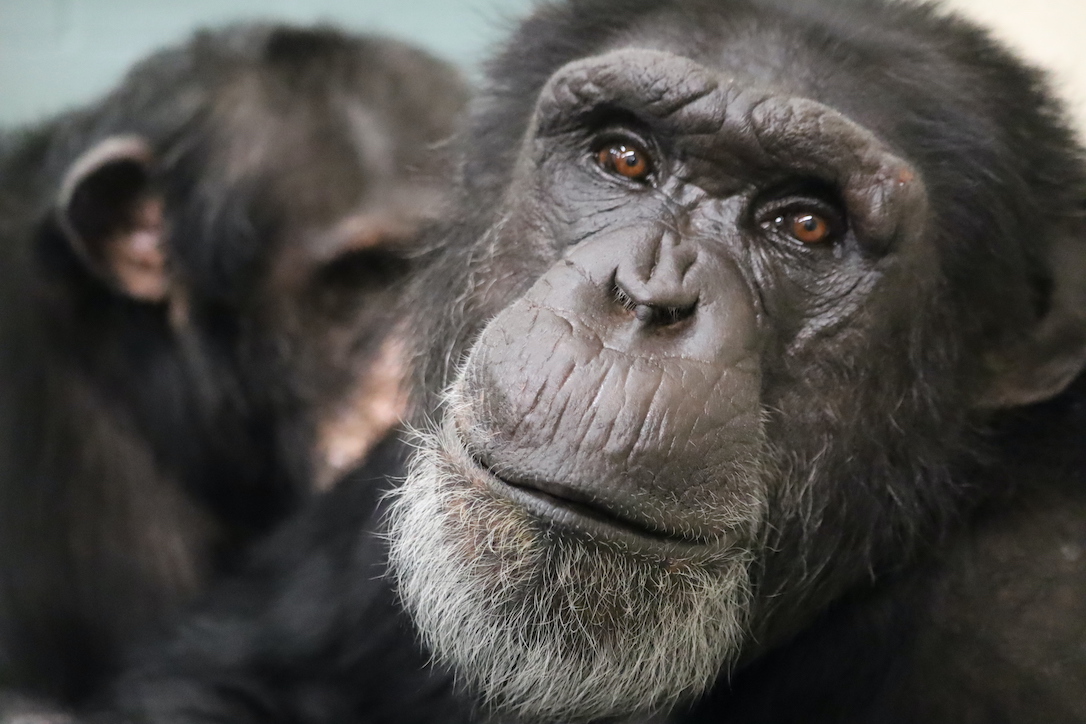

And you will continue to remind others that their lives are important.
There are some monkeys that are being retired from biomedical testing to other sanctuaries now. One day we will join them in providing a home for monkeys. It won’t be all the monkeys who deserve retirement, but for those who come here, we will give them a true sanctuary life and we will share their beautiful faces and personalities with you. Because their lives are important too.
Some day in the future, I can’t even begin to imagine when, but some day, there will be a celebration for the last monkeys in biomedical research in the U.S. going to their sanctuary home.
